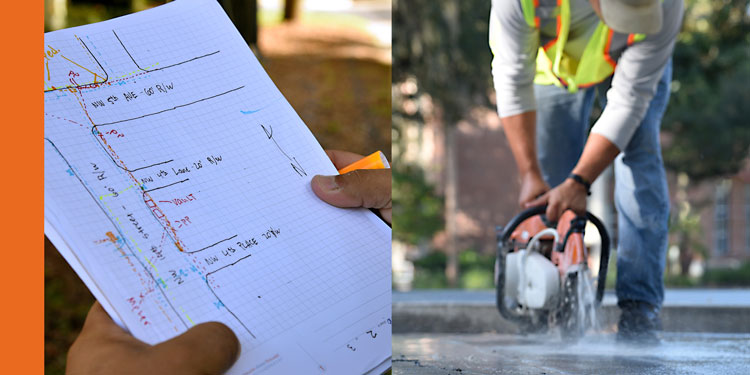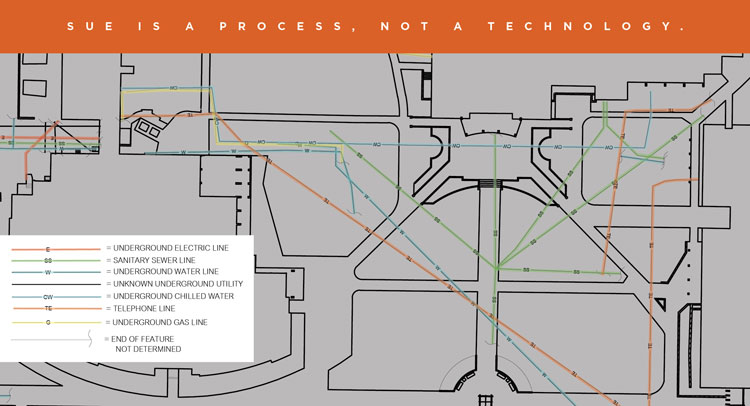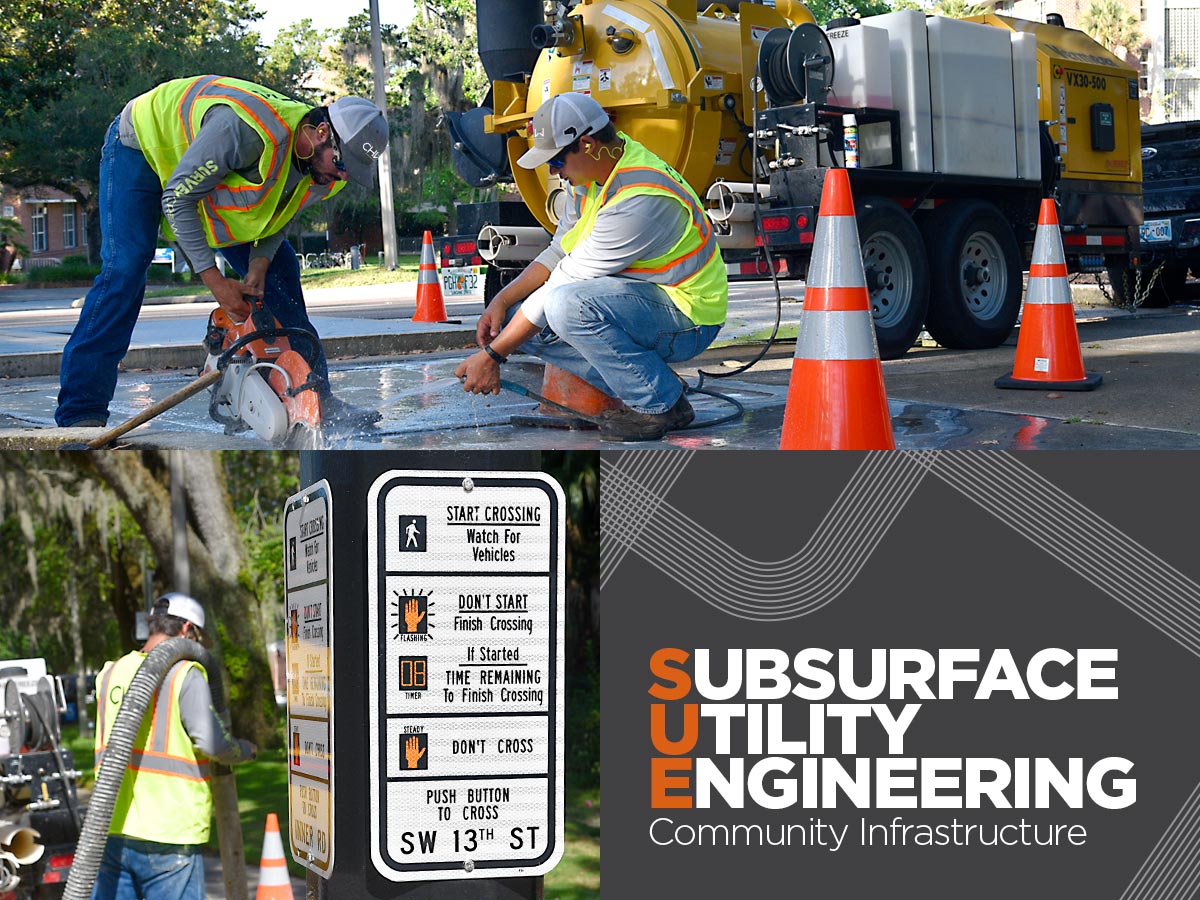Why SUE?
SUE is a process, not a technology. SUE is defined as a branch of engineering practice that involves managing certain risks associated with:
- utility mapping at appropriate quality levels,
- utility coordination,
- utility relocation design and coordination,
- utility condition assessment,
- communication of utility data to concerned parties, conflict avoidance,
- utility relocation cost estimates,
- implementation of utility accommodation policies, and utility design.
These activities, combined with traditional records research and site surveys, and utilizing new technologies such as surface geophysical methods and non-destructive vacuum excavation, provide “quality levels” of information.







